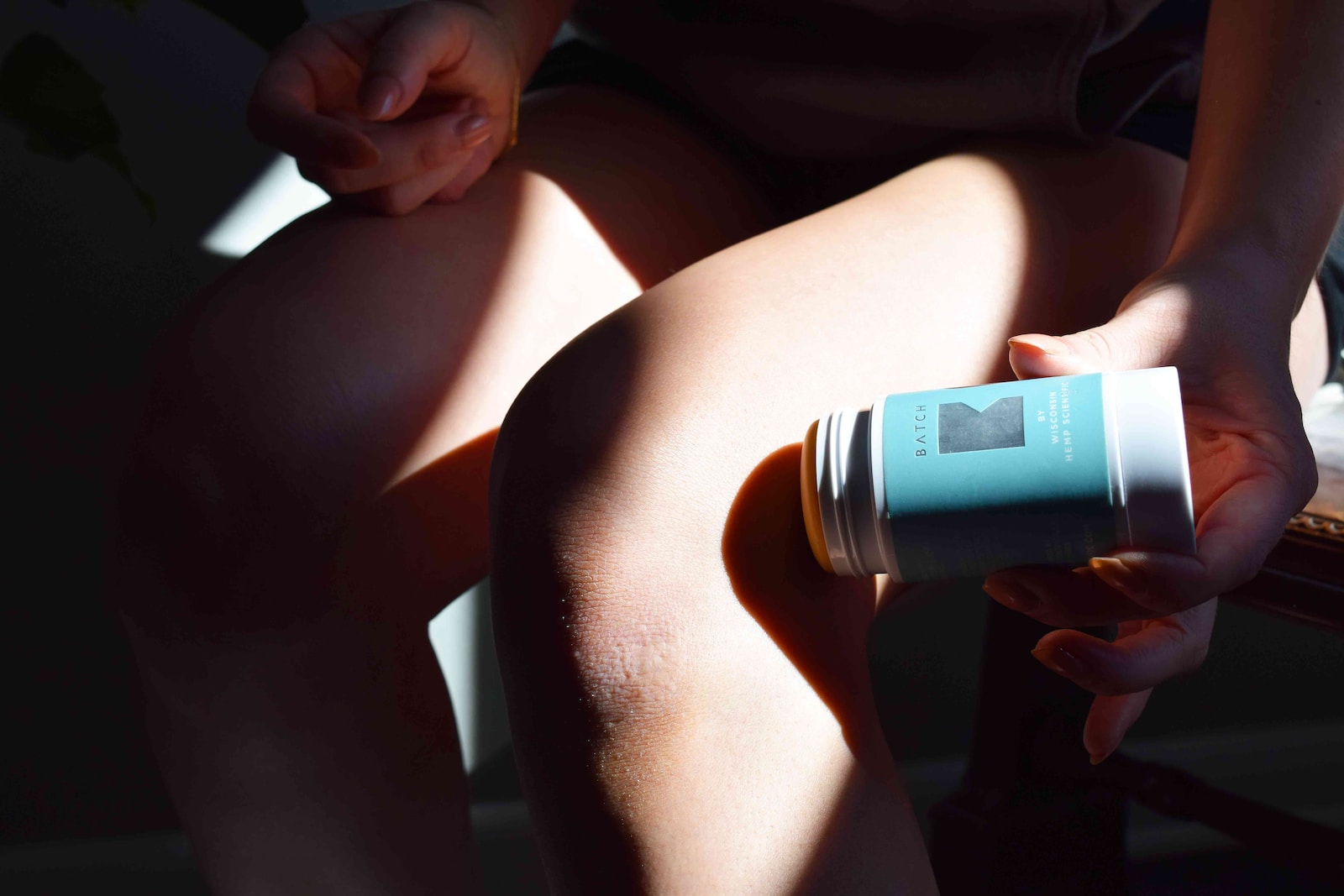Health & Fitness
Get Relief from Knee Pain: Find the Best Cure Here
Knee pain can be debilitating and interfere with daily activities. Fortunately, there are many effective treatments available to help reduce discomfort and improve mobility. This article will provide an overview of the best cures for knee pain, including physical therapy, lifestyle changes, and medications.
Published
2 years agoon

Are you suffering from knee pain? If so, you’re not alone. Knee pain is a common problem that affects people of all ages. Fortunately, there are a variety of treatments available to help you find relief. From medications to physical therapy, there are many ways to get relief from knee pain. On this page, you’ll find information about the best treatments for knee pain, including tips on how to find the right treatment for you. With the right approach, you can find the relief you need and get back to living your life.
Causes of Knee Pain and How to Prevent It
Knee pain is a common complaint among people of all ages, and can be caused by a variety of factors. Knee pain can be caused by an injury, such as a ligament tear or a fracture, or it can be caused by an underlying medical condition, such as arthritis or bursitis. Whatever the cause, knee pain can be a debilitating condition that can affect your ability to move and function normally.
I had constant KNEE PAIN until I visited this website….please click here to get rid of that pain!
The most common cause of knee pain is overuse. This type of knee pain is often seen in athletes who engage in repetitive activities such as running or jumping. Overuse can cause the tendons and ligaments around the knee to become inflamed, leading to pain and stiffness. Other causes of knee pain include trauma, such as a fall or a direct blow to the knee, or a medical condition such as arthritis or bursitis.
In order to prevent knee pain, it is important to take steps to maintain joint health. Regular exercise, such as walking, swimming, or cycling, can help to strengthen the muscles and ligaments around the knee, reducing the risk of injury. It is also important to maintain a healthy weight, as being overweight can put extra strain on the knee joints. Wearing supportive shoes that provide adequate cushioning can also help to reduce the risk of knee pain.
If you already have knee pain, it is important to seek medical advice. Your doctor may recommend rest, physical therapy, or medications to help reduce the pain and inflammation. In some cases, surgery may be necessary to repair any damage to the knee joint.
By taking steps to maintain joint health and seeking medical advice if you experience knee pain, you can help to reduce your risk of developing chronic knee pain.
Different Types of Knee Pain and Their Treatments
Knee pain is a common problem that can be caused by a variety of factors, including injury, overuse, and underlying medical conditions. It can range from mild to severe and can be localized to one area or spread throughout the knee joint. Depending on the cause, treatment for knee pain may include rest, physical therapy, medications, or surgery.
One of the most common types of knee pain is patellofemoral pain syndrome (PFPS). This condition is characterized by pain in the front of the knee, around the kneecap. It is often caused by overuse or misalignment of the kneecap, which can lead to increased friction and pain. Treatment for PFPS typically includes rest, physical therapy, and medications to reduce inflammation.
Osteoarthritis is another common cause of knee pain. This condition is caused by the breakdown of the cartilage that cushions the knee joint, leading to pain, stiffness, and swelling. Treatment for osteoarthritis typically includes lifestyle modifications, such as weight loss and exercise, as well as medications and physical therapy. In some cases, surgery may be necessary to repair or replace the damaged joint.
Meniscal tears are another common cause of knee pain. This condition occurs when the cartilage that cushions the knee joint is torn, leading to pain, swelling, and difficulty moving the knee. Treatment for meniscal tears typically includes rest, physical therapy, and medications to reduce inflammation. In some cases, surgery may be necessary to repair the tear.
Bursitis is another type of knee pain that is caused by inflammation of the bursae, which are small fluid-filled sacs that cushion the knee joint. This condition is often caused by overuse or injury and can lead to pain, swelling, and stiffness. Treatment for bursitis typically includes rest, physical therapy, and medications to reduce inflammation. In some cases, surgery may be necessary to remove the inflamed bursae.
No matter what type of knee pain you are experiencing, it is important to seek medical attention to determine the cause and develop an appropriate treatment plan. With the right care, most types of knee pain can be managed and even prevented.
The Benefits of Physical Therapy for Knee Pain Relief
Physical therapy is an important part of knee pain relief. It can help reduce pain, improve mobility, and increase strength and flexibility. Physical therapy is a safe and effective way to manage knee pain without the use of medications or surgery.
Physical therapy can help reduce knee pain by improving the range of motion and flexibility of the joint. This can help reduce stiffness and pain associated with the knee. Physical therapists can also help to strengthen the muscles around the knee joint, which can help to reduce pain and improve overall stability.
Physical therapy can also help to improve balance and coordination. This can help to reduce the risk of falls and injuries, as well as improve overall mobility. Physical therapists can also provide education on proper body mechanics and posture, which can help to reduce pain and improve function.
Physical therapy can also help to reduce inflammation and swelling in the knee joint. This can help to reduce pain and improve overall function. Physical therapists can also provide guidance on how to properly use assistive devices such as crutches or canes, which can help to reduce pain and improve mobility.
Physical therapy can also help to improve overall strength and endurance. This can help to reduce pain and improve overall function. Physical therapists can also provide guidance on how to properly use exercise to improve strength and endurance.
Physical therapy can also help to reduce stress and anxiety associated with knee pain. This can help to reduce pain and improve overall function. Physical therapists can also provide guidance on how to manage stress and anxiety in order to reduce pain and improve overall function.
Overall, physical therapy is an important part of knee pain relief. It can help to reduce pain, improve mobility, and increase strength and flexibility. Physical therapy is a safe and effective way to manage knee pain without the use of medications or surgery.
Home Remedies for Knee Pain Relief
Knee pain is a common problem that can be caused by a variety of conditions, including arthritis, bursitis, and ligament tears. Fortunately, there are a number of home remedies that can help to reduce knee pain and provide relief.
One of the most effective home remedies for knee pain is rest. Taking a break from activities that involve the knee can help to reduce inflammation and allow the joint to heal. Additionally, it is important to avoid activities that cause pain or discomfort. Ice can also be used to reduce inflammation and provide relief. Applying an ice pack to the affected area for 15-20 minutes several times a day can help to reduce swelling and pain.
Stretching and strengthening exercises can also be beneficial for knee pain. Gentle stretching exercises can help to improve flexibility and range of motion, while strengthening exercises can help to support the knee joint and reduce pain.
Massage can also be used to reduce knee pain. Applying pressure to the affected area can help to improve circulation and reduce inflammation. Additionally, certain essential oils, such as lavender, peppermint, and eucalyptus, can be used to provide relief.
Finally, dietary changes can also be beneficial for knee pain. Eating foods that are rich in anti-inflammatory compounds, such as omega-3 fatty acids, can help to reduce inflammation and provide relief. Additionally, avoiding foods that are high in saturated fats and refined carbohydrates can help to reduce inflammation and provide relief.
By following these home remedies, it is possible to reduce knee pain and provide relief. However, if the pain persists or worsens, it is important to seek medical attention.
When to See a Doctor for Knee Pain Relief
Knee pain can be caused by a variety of factors, ranging from minor injuries to more serious conditions. It is important to be aware of when to see a doctor for knee pain relief, as this can help prevent further injury and ensure that the underlying cause is addressed.
If you experience any of the following symptoms, it is important to seek medical attention for knee pain relief:
• Pain that does not go away after a few days of rest or home remedies
• Swelling or redness around the knee
• Difficulty walking or bearing weight on the affected knee
• Inability to straighten or bend the knee
• Popping or grinding noises when moving the knee
• Weakness or instability in the knee
• A fever or other signs of infection
If you have suffered a traumatic injury to the knee, such as a fall or a sports-related injury, it is important to seek medical attention immediately. This is especially true if you are unable to move the knee or if you experience numbness or tingling in the affected area.
It is also important to see a doctor if you experience knee pain that is accompanied by other symptoms, such as joint stiffness, fatigue, or a fever. These can be signs of a more serious condition, such as arthritis or an infection.
If you are experiencing knee pain that does not improve with rest or home remedies, it is important to seek medical attention. A doctor can diagnose the underlying cause of the pain and provide appropriate treatment. Treatment may include medications, physical therapy, or surgery, depending on the severity of the condition.
It is important to seek medical attention for knee pain relief as soon as possible. Early diagnosis and treatment can help prevent further injury and ensure that the underlying cause is addressed.
If you are suffering from knee pain, there is hope. By exploring the various treatment options available, you can find the best cure for your knee pain. From lifestyle changes to medications and even surgery, there are a variety of treatments that can help reduce your pain and improve your mobility. Taking the time to find the best solution for your knee pain can help you get relief and get back to living your life.
Excerpt
Knee pain can be debilitating and interfere with daily activities. Fortunately, there are many effective treatments available to help reduce discomfort and improve mobility. This article will provide an overview of the best cures for knee pain, including physical therapy, lifestyle changes, and medications.
![]()
You may like
-


Review for the Organic Cotton Beach Tote Bag on Beachesandsea.com
-


From Beach Bum to City Chic: The Tote Bag’s Triumphant Return as a Summer Staple
-


Beaches & Sea: A Beachgoer’s Dream Come True
-


Discover the Secret Weapon Every Beachgoer is Talking About: The ‘No’ Collection!
-


The Easiest Way to Create Personalized Items: A Review of Beaches and Sea’s Design Studio
-


Exclusive £5 Accessory Alert: Unveiling the Essential GA200 Underwater Housing – We found it!


 >
>